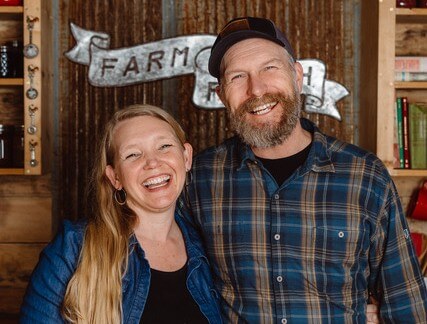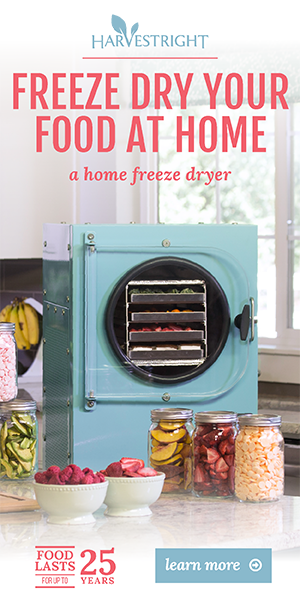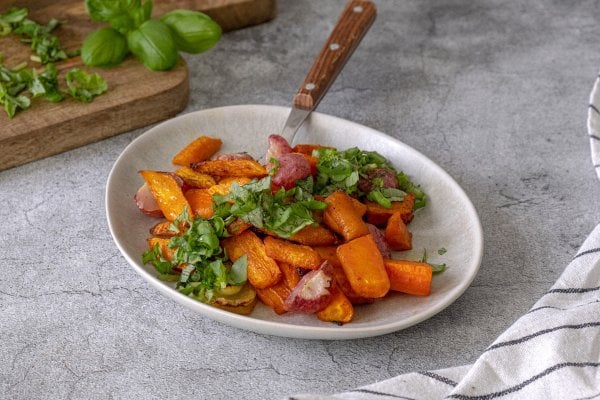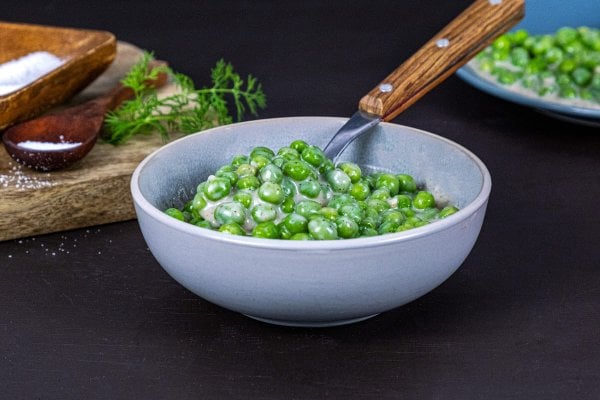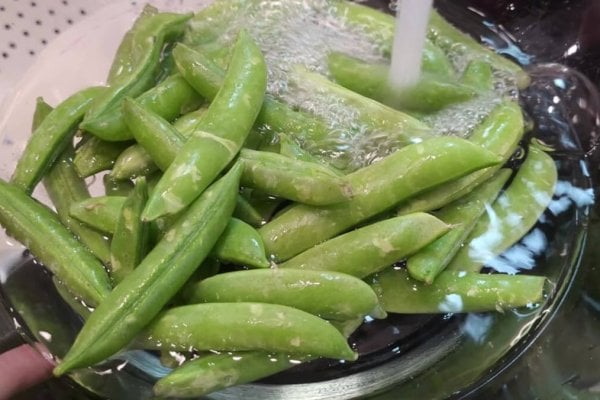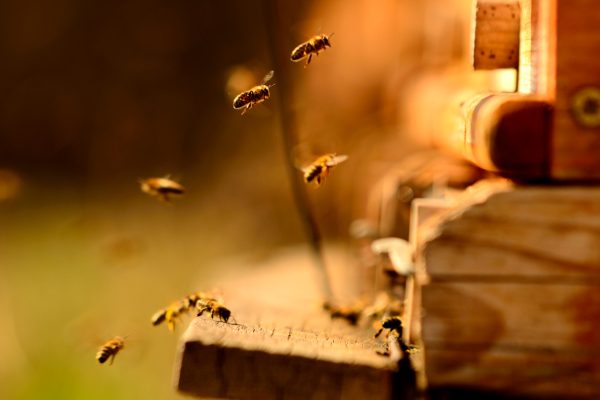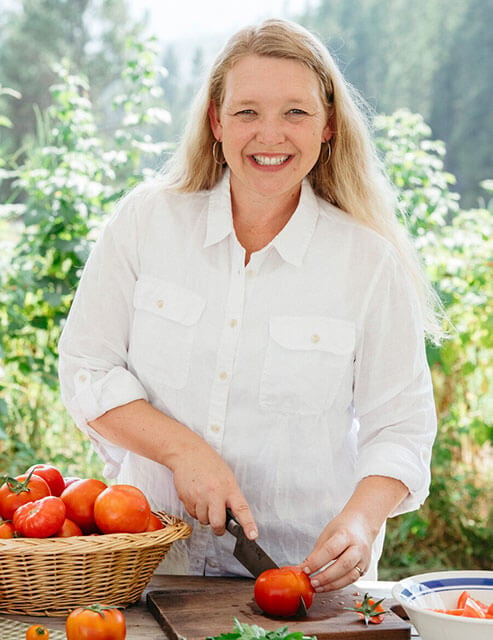You may typically find roast goose at a fine dining restaurant, but for centuries, the stuffed Christmas goose has been a staple at festive tables. This roast goose recipe is the best approach to developing crispy skin and juicy meat. Whether you are a beginner cook or a seasoned chef, this guide will show you how to make this centerpiece shine at your holiday celebrations.

Table of Contents
ToggleWhy We Love Roast Goose
While most modern families choose roasted turkey as a Thanksgiving tradition or ham as their Christmas main dish, the roasted meat on historical tables was often a goose.
Unlike keeping egg-laying chickens, geese lay eggs only seasonally and, therefore, became useless once cold weather set in. This made them obvious candidates for the table instead of the barnyard for the many people who were farming for subsistence.
Roast goose was a popular holiday dish in the United States and much of Western Europe through the 1800s until turkeys became more popular.
Our family raises a goose or two every year for our Christmas feast, and I love to serve it with complementary sides like Parker House rolls, fermented cranberry sauce, green bean casserole, goose fat roasted potatoes and a sweet finish of Nantucket cranberry pie or fruitcake cookies.
The recipe I use for roast goose has been adapted from Christmas from the Heart of the Home by Susan Branch. It’s a beloved book I use for our family at the holidays full of delightful stories, delicious recipes, and touches of love and hospitality.
In the spirit of maintaining a stress-free holiday, I change this recipe a little each time I make it, depending on our preferences and what we have on hand that year. Don’t be afraid to experiment!

What to Do With Goose Fat (Schmaltz)
If you are a homesteader who enjoys raising your Christmas goose, you might be surprised at how much fat a goose can yield.
Using goose fat is not only tasty but also eco-friendly. By using every part of the goose, you help reduce food waste. Strain the rendered fat (also called schmaltz) and store it in an airtight container in the fridge, where it will keep for weeks.
Goose fat is great for adding a rich, savory flavor to dishes. Here are some methods to make simple meals taste like gourmet food.
| Method | Application |
| Roasting | Roast Potatoes, Vegetables, or Root Veggies |
| Sautéing | Sauté Greens, Mushrooms, or Onions |
| Baking | Bake in Pastries, Pies, Bread |
| Confit | Duck, Chicken, Vegetables |
Additionally, fats that provide vitamins A, D, and K are necessary for protein and mineral assimilation, normal growth and hormone production. (Source) Knowing this, goose fat is one of the healthy fats I choose when making homemade baby food.

Where to Buy a Goose for Roasting
If you are not able to raise your own, you still have the option to purchase one for your goose roast. Grocery stores don’t typically sell goose, but you can reach out to local farmers, butcher shops, or specialty food stores for a free range or organically raised goose.
You can even find goose online from retailers that sell goose meat, but always check to make sure they provide detailed info on their products.
Wherever you purchase your meat, make sure to select a reputable source and ask questions about how the animal was raised, butchered, and processed to meet the quality standard you have set for your family.
How Long Does it Take to Roast a Goose?
Roasting a goose to perfection needs careful attention to roasting times, cooking temperature, and internal temperature. Like a whole roasted chicken, the time it takes to roast a goose varies based on its weight. Here’s a simple guide:
| Goose Weight | Approximate Roasting Time | Cooking Temperature | Internal Temperature |
| 8-10 lbs | 2.5 to 3 hours | 325°F (163°C) | 175°F (74°C) |
| 10-12 lbs | 3 to 3.5 hours | 325°F (163°C) | 175°F (74°C) |
| 12-14 lbs | 3.5 to 4 hours | 325°F (163°C) | 175°F (74°C) |

Tips for the Best Roast Goose
Getting your roast goose right is about achieving crispy skin while also maintaining moist meat. It’s a delicate balance, but with the right steps, you can nail it. Here are some key tips to help you:
- Dry the Skin Well – Start by patting the goose dry with paper towels. This will remove excess moisture and help the skin crisp up better in the oven.
- Salt the Skin Generously – Rub plenty of salt into the skin. It makes the skin crispy and adds flavor. You can also add black pepper and spices to taste. You can also dry brine the goose which is where you rub it down with a generous amount of salt (or herbed salt) and let it rest in the refrigerator for a period of time before cooking. The salt draws out the excess moisture in the skin which will help achieve crispiness.
- Prick the Skin – Make small holes in the skin, but not in the meat. This allows the fat to render out and helps the skin get crispy.
- Start with a High Temperature – Roast at 425°F for the first 20-30 minutes to crisp the skin. Then, lower it to 325°F to cook the meat evenly without drying it out.
- Use a Meat Thermometer – Use a thermometer to check the meat’s temperature. Aim for 175°F in the thickest part of the breast meat.
- Resting the Goose – Let the goose rest for at least 20 minutes after taking it out of the oven. This allows the juices to redistribute before carving the bird.
Preparing Your Goose for Roasting
Proper preparation is key to success. Covering these steps before you begin roasting will make all the difference.
- If your goose was previously frozen, make sure it is thawed completely. For big birds, this can take up to three days in the fridge. After thawing, remove the goose neck and innards. Then, rinse the bird under cold water and dry it with paper towels.
- Think about seasoning. Salt and pepper are good, but if you prefer a more complex flavor, try herbs like sage, thyme, and rosemary, which add a nice aroma. Season both inside and out to enhance the flavor.
- Do not neglect to truss your goose. Use twine to tie the legs and tuck the wings behind the back. This keeps the goose’s shape and ensures even browning.
- For crisp skin, you can air-dry or dry brine the goose with kosher salt and score the skin. Air-drying and dry brining reduce moisture while scoring lets the fat render out. Both methods help achieve a golden-brown crust.

The Homestead Kitchen
This roast goose recipe was featured in issue No.16 of the Homestead Kitchen magazine. If you are ready to master your homestead kitchen, this affordable magazine was curated with you in mind.
It’s packed full of cream-of-the-crop homesteading information, including recipes, DIY instructions, inspirational stories, homesteading hacks, book reviews, gardening tips, kids’ projects and more. We can’t wait to share it with you!
If you want to spend less time striving in the kitchen and more time enjoying it, then subscribe today to have your monthly copy delivered right to your mailbox.

How to Make Roast Goose
Supplies Needed
- Basting Bulb – As mentioned before, geese produce a lot of fat. The basting bulb is crucial for producing juicy meat.
- Roasting Thermometer – A meat thermometer is important to make sure you have your goose roasted to a safe temperature without overcooking.
- Skewers – Skewers come in handy for securing the skin in place.
- Kitchen String – Use kitchen string to truss the goose.
- Wire Rack – A wire rack will provide proper airflow for even cooking.
- Roasting Pan – Make sure your roasting pan is large enough to accommodate your goose. Otherwise, it won’t cook evenly, and you will have a mess in your oven from the fat drippings.
Ingredients Needed
- 10 lb Goose – If purchasing a goose, choose a young one from a reputable source.
- 1 Lemon – Preserved lemons or fresh lemon both work great for this recipe.
- Salt – If you’ve been here for long, you know how much we love our Redmond Real Salt. It’s the only salt we buy for both our family and our animals! Homesteading Hack: Using that link for Redmond Salt will automatically give you 15% off your order!



Step-by-Step Directions
- Preheat oven to 450°F.
- Remove any giblets, neck or other pieces from inside the goose. Keep these to flavor homemade bone broth or make gravy later. Pull off and discard any visible pieces of fat.
- Rinse the bird all over with cold water and pat dry.
- Prick the goose skin on the lower half of the breasts and on the thighs with a fork. These small holes allow fat to drain throughout cooking.
- Place goose breast side up on a wire rack in a roasting pan.
- Pull skin over the lower cavity and secure it in place with a skewer (or two).
- Squeeze lemon juice over the whole bird, then salt lightly. Tie the legs together with the kitchen string.
- Flip the bird over in the rack, breast-side down, and roast for 45 minutes to one hour at 450°F.
- Every 30 minutes, use the basting bulb to siphon off the fat in the pan. You can reserve this fat for later uses (gravies, soups, etc). It freezes well in ice cube trays.
- After 1 hour of cooking the goose, reduce the oven to 325°F and flip the goose breast-side up. Cook the goose for one more hour, checking for doneness with a roasting thermometer. The goose is done when the thickest part of the breast reaches 175°F. If the goose isn’t brown enough, turn the oven up to 400°F for the last 15 minutes of cooking.
- Remove from the oven and allow the goose to rest for 20 minutes before carving.
- To serve, slice the meat thin, discarding fat and unwanted skin as you go.
Did you try this roast goose recipe? If so, please leave a star rating in the recipe card below. Then snap a photo and tag us on social media @homesteadingfamily so we can see!

Other Posts You May Enjoy
- Homesteading Family’s 2020 Year in Review
- Homesteading Family’s Thanksgiving Traditions
- Enjoying Stress-Free Holidays
- Preserve Your Harvest: Canning Potatoes Guide
- Homemade Pumpkin Pie Recipe – From Scratch
- Canning Apple Pie Filling: Easy Homemade Preserves
- Homemade Pie Crust Recipe
- Parker House Rolls Made With Sourdough
- Easy Homemade Fermented Cranberry Sauce
- Nantucket Cranberry Pie Recipe

Roast Goose Recipe
Equipment
- Basting Bulb
- Roasting Thermometer
- Skewers
- Kitchen String
- Wire Rack
- Roasting Pan
Ingredients
- 10 pound goose
- 1 lemon
- salt
Instructions
- Preheat oven to 450°F.
- Remove any giblets, neck or other pieces from inside the goose. Keep these to flavor homemade bone broth or make gravy later. Pull off and discard any visible pieces of fat.
- Rinse the bird all over with cold water and pat dry.
- Prick the goose skin on the lower half of the breasts and on the thighs with a fork. These small holes allow fat to drain throughout cooking.
- Place goose breast side up on a wire rack in a roasting pan.
- Pull skin over the lower cavity and secure it in place with a skewer (or two).
- Squeeze lemon juice over the whole bird, then salt lightly. Tie the legs together with the kitchen string.
- Flip the bird over in the rack, breast-side down, and roast for 45 minutes to one hour at 450°F.
- Every 30 minutes, use the basting bulb to siphon off the fat in the pan. You can reserve this fat for later uses (gravies, soups, etc). It freezes well in ice cube trays.
- After 1 hour of cooking the goose, reduce the oven to 325°F and flip the goose breast-side up. Cook the goose for one more hour, checking for doneness with a roasting thermometer. The goose is done when the thickest part of the breast reaches 175°F. If the goose isn’t brown enough, turn the oven up to 400°F for the last 15 minutes of cooking.
- Remove from the oven and allow the goose to rest for 20 minutes before carving.
- To serve, slice the meat thin, discarding fat and unwanted skin as you go.
Notes
Tips for the Best Roast Goose
Getting your roast goose right is about achieving crispy skin while also maintaining moist meat. It’s a delicate balance, but with the right steps, you can nail it. Here are some key tips to help you:- Dry the Skin Well – Start by patting the goose dry with paper towels. This will remove excess moisture and help the skin crisp up better in the oven.
- Salt the Skin Generously – Rub plenty of salt into the skin. It makes the skin crispy and adds flavor. You can also add black pepper and spices to taste. You can also dry brine the goose which is where you rub it down with a generous amount of salt (or herbed salt) and let it rest in the refrigerator for a period of time before cooking. The salt draws out the excess moisture in the skin which will help achieve crispiness.
- Prick the Skin – Make small holes in the skin, but not in the meat. This allows the fat to render out and helps the skin get crispy.
- Start with a High Temperature – Roast at 425°F for the first 20-30 minutes to crisp the skin. Then, lower it to 325°F to cook the meat evenly without drying it out.
- Use a Meat Thermometer – Use a thermometer to check the meat’s temperature. Aim for 175°F in the thickest part of the breast meat.
- Resting the Goose – Let the goose rest for at least 20 minutes after taking it out of the oven. This allows the juices to redistribute before carving the bird.
Preparing Your Goose for Roasting
Proper preparation is key to success. Covering these steps before you begin roasting will make all the difference.- If your goose was previously frozen, make sure it is thawed completely. For big birds, this can take up to three days in the fridge. After thawing, remove the goose neck and innards. Then, rinse the bird under cold water and dry it with paper towels.
- Think about seasoning. Salt and pepper are good, but if you prefer a more complex flavor, try herbs like sage, thyme, and rosemary, which add a nice aroma. Season both inside and out to enhance the flavor.
- Do not neglect to truss your goose. Use twine to tie the legs and tuck the wings behind the back. This keeps the goose’s shape and ensures even browning.
- For crisp skin, you can air-dry or dry brine the goose with kosher salt and score the skin. Air-drying and dry brining reduce moisture while scoring lets the fat render out. Both methods help achieve a golden-brown crust.

